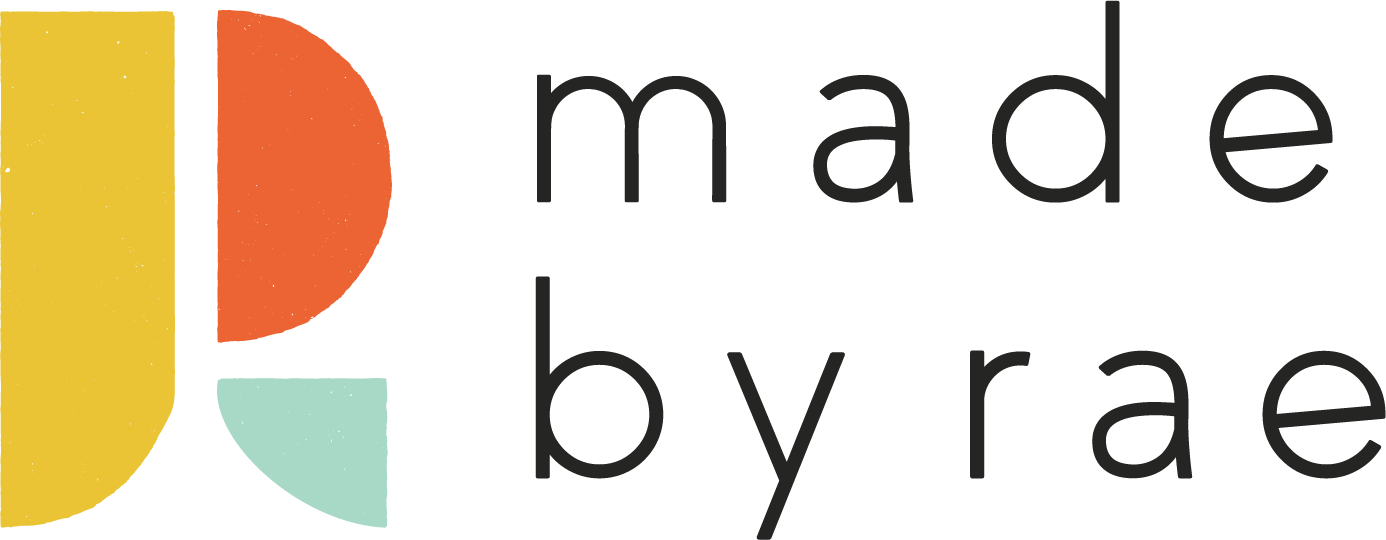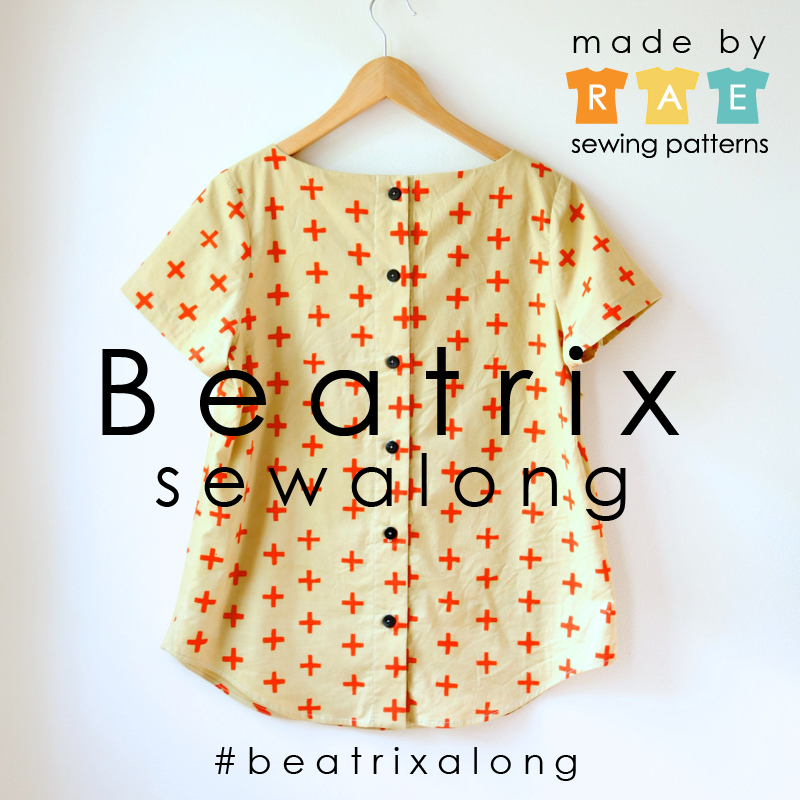Beatrixalong Day 2: Trace and Muslin
Beatrixalong
Based on the measurements you took yesterday, you should have a good idea of what size Beatrix you'll need to make. Today we're going to:
Trace your pattern pieces and
Sew a muslin
First, let's trace your pattern pieces!
Lay your pattern pieces out on a nice flat surface and place a piece of tracing paper* over them. Add pattern weights (or coffee mugs. or your rock collection. or whatever you have handy) to hold everything in place. Using a pencil (or colored pencil, like Tashina's using below) and a ruler to help you draw nice straight lines, trace around each pattern piece to get the size you need, including all of the dart lines, notches, and other markings like the fold arrows. Don't forget the fold lines in the back too! It's a good idea to do this quickly, but don't be sloppy. If these pattern pieces end up working out for you, you'll be glad you took a few extra minutes to mark everything carefully.
You'll need to trace the following pieces for the #Beatrixalong: Front Bodice, Back Bodice, Short Sleeve, Front Facing, and Back Facing. I also usually cut out the Button Placket Interfacing (I fold down my size from the XXL) and the Button Template right from the paper printout; you don't need to trace those.
A few more things to keep in mind as you trace:
we’ll be using the short sleeve for this sewalong, but if you’d rather make the 3/4-length sleeve that is just fine too.
you’ll need to follow the curved hem for View A, but again, if you want to trace the View B cutting lines (at the hem and Center Back), those might come in handy later.
Finally, label your piece with the pattern name, pattern piece, and size for easy reference later.
*Swedish Tracing Paper is available at Organic Cotton Plus and WAWAK; please read this post if you want to know more about why and how I trace patterns this way. There’s a variety of other tracing paper options: I’ve heard of people using freezer paper (available at the grocery store), non-fusible interfacing (Pellon 830 “Easy Pattern” is great), and even asking for exam table paper used in doctors’ offices.
Now it’s time to make a muslin!
I strongly recommend making a muslin. A muslin is a test-run of the Beatrix, with (or without, as shown below) sleeves. If you’re worried about your shoulders or arms (broad shoulders, wide arms), I recommend adding the sleeve to the muslin. If you aren’t worried about the fit through the sleeves, just make a bodice muslin. The key here is to do this quickly, so that if you need to adjust or make another muslin, it won’t take hours and hours. But do take some extra time to get the right fit NOW so you don’t waste fabric on a version that doesn’t fit you. Once you get the fit right, you’ll be amazed at how quickly you can make more Beatrixes for yourself that fit and flatter your body without having to fuss.
This sewalong is a great opportunity to post photos of your muslins (remember to tag #beatrixalong so I’ll see them) and get some feedback from your fellow sewing-mates. I’ll try to weigh in whenever I can.
So, go ahead and take a look at the “getting a good fit” section at the beginning of the pattern for the rough instructions on how to construct a muslin, and use your FRONT BODICE and BACK BODICE to whip up a quick muslin using the instructions there.
My general guidelines for making a muslin:
use an inexpensive woven fabric, such as unbleached muslin or an old sheet
use cotton thread
use a basting stitch to sew all seams
skip backstitching at the beginning and end of each seam
Those last three are important because you want the ability to tear out the seams (literally rip them apart with your hands) and readjust or re-sew as quickly as possible. Finally, don’t sweat your sewing technique right now. If you don’t sew these darts perfectly or you attach the sleeve without puckers, it’s not a big deal. Remember, this is just to check fit, this is not something that will be worn. Repeat after me: a muslin is just a tool.
Once you’ve made your muslin, it’s time to evaluate the fit from the top down:
Look at the shoulders. Do they look like they’re the right width?
Look at the dart and make sure it points toward your bust apex (the “top of the mountain” if you catch my drift, note that this is not aways the same thing as your nipple). The dart should end 1/2″ to 1″ from your bust apex.
Look at the bust. Does it feel comfortable and fit without pulling or neckline gaping?
Look at the neckline; does it look the way you want it to? Remember it will be 1/4″ bigger all the way around once the facings are attached, and feel free to take your shears and cut that 1/4″ off around the muslin neckline to really help you visualize. Gaping necklines often indicate more room is needed for the bust, FYI.
Move your arms around a bit. Do you feel like you have enough room to move your arms? It’s VERY important to remember that the sleeve seams will make the armholes 1/2″ bigger all the way around than they are right now, so go ahead and cut that 1/2″ off around the armholes if you want to check, or attach a quick muslin sleeve if you’re nervous about the sleeve).
Does it fit through the waist and hips?
Look at the hem and see if it lands where you want it to. Remember it will be 1/2″ shorter once hemmed.
If the answer to any of these questions is NO, you might want to make some adjustments. Note that while I would *LOVE* to demonstrate all these adjustments for you for Beatrix, I’m going to have to just provide you with some resources for now. My hope is to put together a Fit series on the blog that will address some common adjustments at some point in the near future, but for now, I’m going to lean on some of the awesome resources online and link to them here. And if you have a problem that isn’t addressed here, google it! You will be amazed at all the links and videos you can find online!!!
Here are just a few awesome linkadoos to help you with adjustments:
Full Bust Adjustments: Megan Nielsen’s FBA / Tilly and the Buttons’ Bust Adjustments / Christine Hayne’s Emery FBA
Small Bust Adjustments: Megan Nielsen’s SBA / Tilly and the Button’s Bust Adjustments / Christine Hayne’s SBA
Shorten/Lengthen Dart: Bust Dart adjustment – how to shorten or lengthen a dart
Raise/Lower Dart: Megan Nielsen’s dart tutorial
Shorten/Lengthen Top: Oliver+S’ How to lengthen/shorten a pattern
Adjust shoulder fit: Sewalongs.com’s Hawthorn shoulder adjustment / About.com’s Shoulder Adjustments / Curvy Sewing Collective’s Narrow Shoulder Adjustment
Hollow Chest adjustment (usually for neckline gaping when an FBA isn’t needed): Phat Chick’s Hollow Chest Tutorial
Adjust sleeve for wider arms: Curvy Sewing Collective’s Sleeve Adjustment
Play around with your muslin until it fits the way you want it to, taking notes along the way. Once you have a muslin you are happy with, DON’T FORGET TO MAKE THE CORRESPONDING CHANGES TO YOUR PATTERN PIECES, RETRACING THEM IF NEEDED. Then you’ll be ready to cut into your fabric with confidence!
And now I want to just talk to those of you with Obsessive Personalities: It’s OK if your muslin is not PERFECT. Sewing clothes is a learning process, so if you have a muslin that fits pretty well and you’re starting to obsess over really minor fit details, it might be time to just let it go. Apparel fabrics are almost always more forgiving than muslin is, so some little issues might even disappear completely when you use real fabric. If you find yourself falling down the Fit Rabbithole, it’s time to give yourself a reality check: sometimes it’s better just to cross the finish line than to run the race perfectly.
OK, let’s review today’s assignment:
Trace the pattern pieces in your size onto tracing paper
Sew a muslin
Make adjustments to fit
Make changes to pattern pieces
And here’s your extra credit assignment:
Post a photo (crappy phone pics are fine) to Facebook, Instagram, or Flickr showing me hard evidence you’ve done something from today’s sewalong post with the tag #beatrixalong. If you blog about it, post a link in comments.
Remember, you can sign up to receive my blog posts via email here so you won’t miss any of the sewalong posts!




